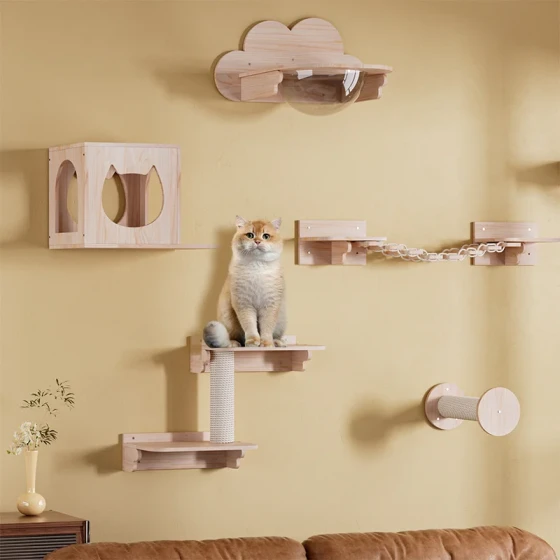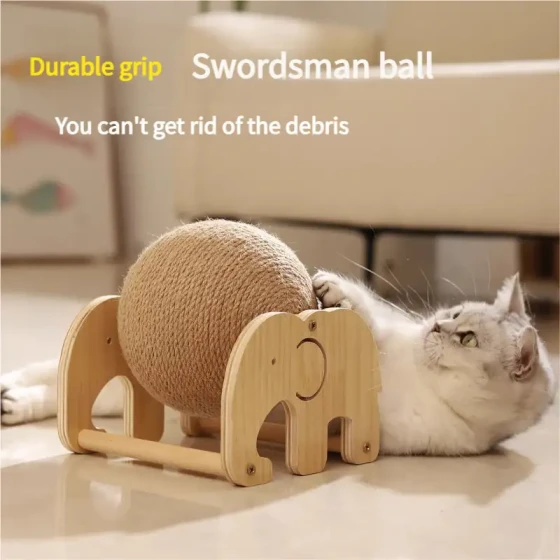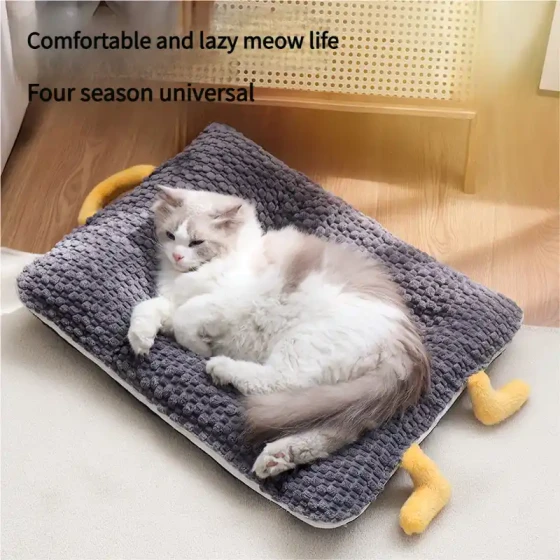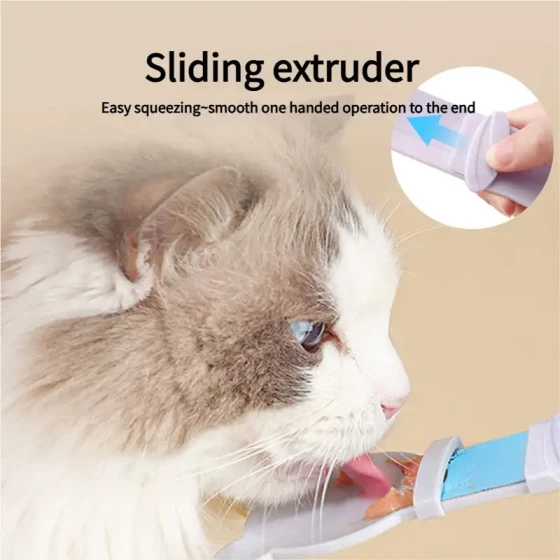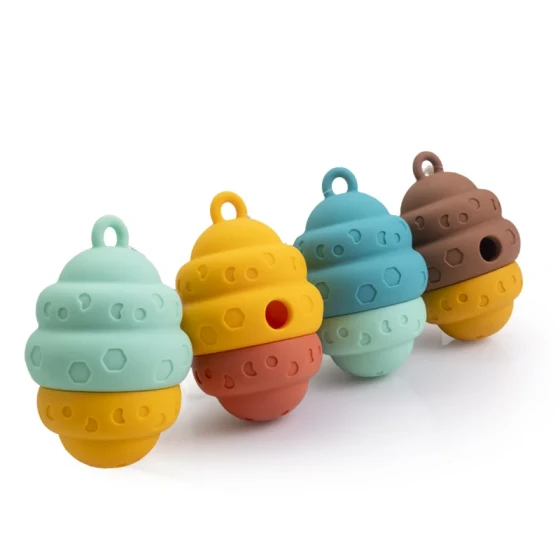When do cats start to be less clingy_ Do cats stop being clingy when they grow up
Cats usually start to become less clingy between 6-12 months old because they are entering their independent teenage phase. However, whether they become completely non-clingy after growing up depends on breed, personality, and the owner's way of interacting — don’t expect every cat to be as clingy as a Ragdoll cat for life, nor think that they will completely turn their back on you. This question seems simple but actually involves many aspects of feline behavior. How does a clingy kitten turn into a cold and aloof adult cat? This is due to both physiological development and subtle psychological changes. Next, let’s talk about the cat’s growth trajectory, analyze the ins and outs of their "clinginess," and give some tips for owners on how to peacefully coexist with these little emperors.
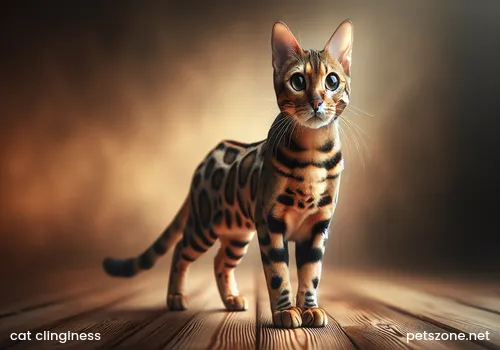
Cat Growth Timeline: From Clingy Kitten to Independent Adult
The growth process of cats is somewhat similar to humans and can be divided into several stages, each with its own temperament:
- Kitten Stage (0-6 months)
At this stage, cats are practically walking clinginess machines. Newly born kittens haven’t even opened their eyes, relying entirely on the mother cat to feed, groom, and even help with elimination. After weaning, when they enter a human home, they treat their owner as a "proxy mom." They follow you everywhere, sleep next to you, and even knead you at night until you question your sanity — this clinginess is not fussiness, it’s survival instinct. According to cat behaviorist John Bradshaw, kittens gain security and food through close contact with their caregiver; this dependence is especially strong before six months. - Adolescent Stage (6-12 months)
At this age, cats start to rebel. Their bodies develop rapidly, their curiosity explodes, and clinginess naturally decreases. You’ll notice they no longer follow you around all day, preferring instead to jump on windowsills to watch birds or challenge the cat wand toy at home. It’s not that they love you less; their independence is awakening. A foreign cat blogger once complained: “My cat still slept beside my pillow at 6 months but by 10 months only acknowledged the cat tree; I felt dumped.” Cats at this stage are like human teenagers, busy finding themselves, and clinginess temporarily takes a backseat. - Adult Stage (1 year and older)
After one year old, a cat’s personality is basically set. Some remain clingy, like those who like to lie on your lap while you watch TV; others completely "retire," spending their days on high perches overlooking everything, aloof like a philosopher. Adult cat behavior is often the result of early experiences and genetics combined. Whether they are neutered also affects clinginess — intact cats may focus more on territory and mating, with less attention on being clingy.
The Truth Behind Clingy Behavior: Why Do Cats Cling to You?
Cats aren’t clingy just for cuteness; there are several driving factors behind it:
- Need for Security
The world is both new and dangerous for kittens. Clinging to their owner makes them feel protected. Animal psychologist Konrad Lorenz pointed out that attachment behavior in juvenile animals is an innate survival strategy. The owner’s warm embrace is like their mother cat’s nest, providing a psychological safe haven. - Social Instinct
Don’t be fooled by the saying "cats are solitary animals." Domesticated cats have evolved social needs over thousands of years. They express affection by rubbing and licking you, often treating you as a "companion." Especially kittens have stronger social needs; their clinginess is their way of "making friends" with you. - Resource Dependence
Food, toys, water — these are essential for cats’ living, and you’re the one opening the cans. Kittens especially understand this, sticking close to you not only to get food but to get hugs too. As adults, they learn to entertain themselves, so their motivation to cling is naturally lessened.
Grown Up but Not Clingy? The Truth is Not That Absolute
Many owners wonder: so clingy when small, why do they become aloof when grown? Actually, this is a half-truth.
- Independence is Innate
Cats are solitary hunters by nature. As adults, they instinctively reduce dependence on others, spending more time alone or guarding their territory. The 6-12 month transition period is when this nature begins to awaken. Don’t be upset; this isn’t about you personally but a cat’s "coming of age". - Clinginess Varies by Cat
Not all cats turn into cold-faced loners when they grow up. Breeds like Ragdolls and Siamese, known as "people pleasers," can remain clingy adults. Whereas British Shorthairs and Russian Blues, naturally more aloof, tend to adopt solitary modes early. Personality differences are crucial — a friend’s domestic cat has been clingy since kittenhood and still likes sleeping on his chest at age ten, a true feline romantics’ representative. - Environment and Interaction Make a Difference
Whether a cat is clingy also depends on how you raise it. If the home is warm and safe, they naturally want to stick around more; if you move often or noise is constant, the cat might not even want to interact. The way the owner engages matters too — if you’re constantly busy on your phone ignoring the cat, why should it cling to you?
Four Major Variables That Affect Clinginess
Want to know if your cat will be clingy forever? These factors can give you a hint:
- Breed Genetics
Ragdolls are known as the "dog of the cat world," with a clinginess index through the roof; Siamese cats are famous for being chatty and clingy. Conversely, big breeds like Norwegian Forest Cats and Maine Coons are often more independent. Check breed traits before choosing a cat; don’t expect aloof cats to suddenly become affectionate. - Individual Personality
Cats’ personalities vary widely. Some are naturally outgoing, others love solitude. My orange cat was as clingy as chewing gum when young but grew to only sunbathe and require petting on his own terms. - Living Environment
Cats in stable environments with plenty of toys are more willing to interact with owners. Conversely, a chaotic home can make cats hide and avoid clinginess. There’s a case where a cat stopped being affectionate for half a year after a move due to unfamiliar surroundings, later resumed clinginess upon settling into a new home. - Your Attitude
If you spend time playing, petting, and gently talking daily, the cat is likely to treat you as a "dedicated ally." But if you’re inconsistent, don’t blame it if it turns cold. Cats are pragmatic; good treatment from you will be reciprocated.
How to Make Your Cat Cling to You More?
Since cats being less clingy when grown is the norm, are there ways to keep that intimacy? Try these tips:
- Create a Safe Cozy Space
Provide a comfortable territory — a cat bed, cat tree, a windowsill lookout; none are dispensable. When they feel secure, they’re more willing to play with you. If budget is tight, even an inexpensive scratching board can help. - Engage with Heart
Spend 15 minutes a day playing with wand toys or gently scratching under their chin. Don’t underestimate these small gestures; cats remember them. The key is pacing — don’t overdo playtime or force attention, cats hate feeling "kidnapped." - Respect Their Boundaries
Unlike dogs, cats have limits on clinginess. Forcing hugs or petting may earn you a scratch. Learn to read cat body language: a swishing tail means “don’t bother me.” - Food Bribes
Treats are a universal key. Giving small rewards like freeze-dried chicken after interaction can associate you with "happiness." But don’t overfeed; watch their weight.
Whether Clingy or Not Isn’t That Important
Ultimately, whether a cat is clingy or not is just an expression of their personality. A sweet kitten turning into an aloof adult isn’t necessarily a sign of fading affection but them adapting to the world their own way. An elderly cat owner abroad once said something poignant: “When cats stop clinging, they’re actually telling you they trust you enough.” It makes sense — they dare to sleep beside you or daydream alone on the windowsill because you’ve given them enough security.
So don’t obsess over when cats start to be less clingy or worry they don’t love you anymore when grown. Every cat has its own rhythm; some cling forever, others become independent early, all normal growth paths. As owners, we can only accompany them along the journey. After all, what cats bring us isn’t just moments of clingy warmth but a philosophy of peaceful coexistence. What do you think?
References
- "Cat Behavior," John Bradshaw
- "Animal Psychology," Konrad Lorenz
- PetMD website
- ASPCA website
